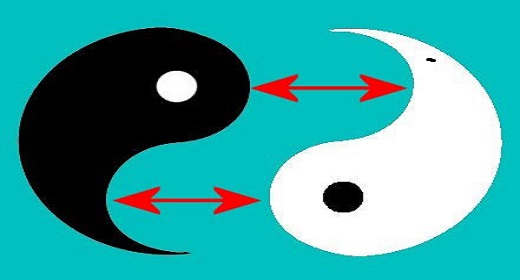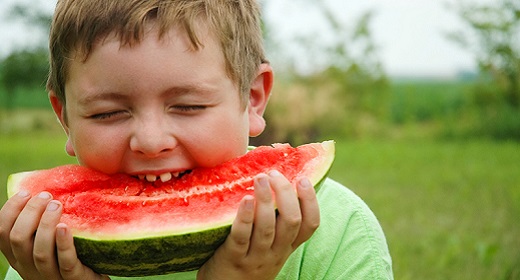by Sally Kemptom: The Indian deity Parvati is surprisingly relevant to anyone looking to balance strength with gentleness…

Laura, who has a demanding job in the finance industry, a meaningful yoga practice she cares about but is neglecting, and a new romantic relationship, told me recently that she can’t seem to integrate it all. Her working self, her yogini self, and the person she is when she’s with her boyfriend seem like different people. “I don’t know how to be with Andy without turning into my mother,” Laura told me—her mother having been a Mormon wife who took for granted that she should put her husband’s needs and agendas before her own. “Half the time, I’m going to whatever movie he wants to see, spending time with his friends, and keeping quiet when I disagree with him. And pretty much letting go of my practice. Then I realize what I’m doing and freak out and start a fight. It’s like I don’t know how to be strong and soft. It’s always either one or the other.”
Laura’s dilemma isn’t an uncommon one in this era of evolving gender roles. And it isn’t just women who struggle with this problem. In fact, it happens to be one of life’s great questions: How do we find the balance between decisiveness and cooperation, between autonomy and partnership, between strength and softness?
As I listened to Laura, it occurred to me that it would help her to meditate on the story of Parvati. Of all the Indian goddesses, Parvati is the one who most embodies the complex possibilities inherent in contemporary feminine roles. Deity meditation is a great practice for bringing out the buried strengths of the psyche, and meditating on Parvati can bring a powerfully helpful energy to the challenge of balancing strength and softness. For men, Parvati can be a powerful link to the inner feminine.
I first came across the story of Parvati early in my practice. It leapt out at me from the Shiva Purana, a fat mythological text of the Indian tradition, and when I read it, I felt in some odd way that I was reading my own story. I identified with Parvati, the maiden yogini who takes off for the wilds to practice hard-core yoga and wins the love of Shiva, the lord of yoga, whose outlaw cool and air of unavailability played into one of my primary romantic tropes. Independent yet devoted, a teacher as well as a wife, Parvati’s name is synonymous with yogic willpower as well as with love. She is a maiden, a lover, and a mother—powerful in her own right, yet an equal partner in a marriage that combines the erotic and the sacred like no other in the tradition.
Invoking the Goddess
To see how Parvati can be such a powerfully helpful energy in the life of a woman trying to balance strength and softness, it helps to understand why an Indian goddess figure might be relevant to your life at all. In psychological terms, the deities of the Indian tradition are archetypes, subtle energies lying deep within the unconscious. In the language of yoga, however, the major deities of the Indian tradition are literally aspects, or faces, of the one divine reality. Indian tradition worships reality as a single seamless whole, in which the Divine is not only transcendent and formless but also layered into the cellular structure of the world and capable of taking personal forms. Deities like Krishna, Shiva, Durga, Rama, and Lakshmi, according to this tradition, are more than symbols. Their figures contain the full power of the Absolute in a particular aspect, and when you contemplate them, they shed a particular quality of light into your consciousness.
But there’s an even more practical side to deity meditation. When you contemplate deity energy, it lets you bypass your own ego, with its tendency to identify with your limitations and culturally determined assumptions, and internalize qualities of the higher Self. Have you ever gone to a movie or concert and come out moving and talking like the star? Deity meditation works on a similar principle, except that focusing on Parvati or Hanuman is quite a different proposition from meditating on Angelina Jolie or Jay-Z. Meditation on a divine archetype calls forth transformative powers of our consciousness, which is one reason that deity practice has been such a crucial part of Indian and Tibetan Tantric yoga since the early Middle Ages.
The Sanskrit word for deity is deva, or devi, which means “shining one.” This is exactly what deities are—beings of light who exist at subtle levels of awareness, in realms prior to physical manifestation. That means that, when you focus on these energies, they empower transformation at the subtle level, where it is actually possible to make changes that will then show up in your physical life.
Though deity worship is embedded deep in the fabric of traditional Hindu culture, Tantric deity practice aims at something that is more radical and subtle than external ritual. It’s a strategy for internalizing the subtle powers personified in a deity. The idea here is that by tuning in to a deity figure, you liberate certain qualities in yourself—Durga’s protective energy, Lakshmi’s power of abundance, Shiva’s yogic mastery, Hanuman’s strength.
You might connect to a deity through a mantra or through meditating on a painting of the deity (traditionally made by an artist who has meditated deeply and received an inner image that is then represented on canvas). You might read one of the deity stories and imagine yourself into it. Or you might simply contemplate the deity’s qualities. Deity energies can be inspiring and protective. But most important, they enlarge your sense of Self.
This is especially true when it comes to the archetypal energies of feminine power. The energy of the divine feminine has historically been hidden in both Eastern and Western society, just as the strengths of women were kept subordinate to the masculine. It is no coincidence that in the past 50 years, as women have come into stronger positions in society and politics, images of the divine feminine have begun to surface as role models and exemplars of specifically feminine forms of strength. Nor is it an accident that Tantric practices, which more than any other honor the shakti, the feminine aspect of God, have begun to draw attention in the world. Unlike the Western traditions, which see the feminine as essentially passive and receptive, the divine feminine in Tantric tradition is the very creativity and potency of the Absolute—the shakti is as inseparable from the Divine as heat is from fire. Goddess practice has been a major part of Tantric traditions in both India and Tibet, and most of the practitioners in these traditions have been men, who meditated on the goddess as a way of gaining creative power, literary gifts, or strength in combat. For many women—and men—the Indian power goddesses like Durga and Kali are particularly potent, perhaps because of their radical and warriorlike energy. Yet, though Kali is undeniably fascinating, with her bloody sword and necklace of skulls, there is a lot to be learned from a figure like Parvati—a gentle form of Durga—who is as human as the yogini next door.
Epic Romance
Parvati comes onto the stage of mythology as a young maiden, the daughter of the mountain king Himalaya. She’s fiercely independent, and with good reason: Parvati is the incarnate form of the primordial shakti, the divine feminine power in its absolute form. She has come into being at the request of the gods, to draw Shiva from the remote cave where he sits in unbroken meditation, mourning for his first wife, Sati, as the affairs of the universe fall into disarray.
Parvati is the reincarnation of Sati. She is dynamic power itself, without which the divine masculine has no capacity to act. The relationship mirrors the state of a human being when the masculine and feminine aspects of our being—the power of awareness that is the eternal masculine, and the power of love, which is the eternal feminine—are split off from each other. But it is also about what happens to the world when spirit, mind, and logic (the traditionally masculine qualities of the psyche) are split off from feeling, sensuality, and the capacity to care for the world (the traditionally feminine qualities). To restore balance, the feminine has to intervene because, left on its own, the masculine lives in the world of ideas, detached from feeling and from the need to regenerate the world.
So the romance of Parvati and Shiva is partly a story about how feminine strength transforms the world in the service of love. It’s also a profound metaphor for integration—for the union of mind and heart, of love and wisdom, that has to take place before we can be fully whole.
And it’s a remarkable story. In the first act, Parvati enters the grove where Shiva is meditating, accompanied by the mischievous god of desire, Kama. Shiva opens his eyes just as Kama shoots an arrow at his heart—causing Shiva to fall instantly in love. But he also realizes that he’s being bamboozled by the urge to pleasure—and disposes of Kama with a single beam of his all-seeing third eye. This leaves Parvati no choice: To win Shiva, she will retreat and do tapas, or intense yogic practice—the time-honored way in which yogis earn the power to transform their destiny. But (and this is the key to her strength) she will do it from a place of love.
Tapas literally means “heat.” In the yogic traditions, one point of practice is to create an inner yogic fire that dissolves impurities and draws power. It is said that Brahma, the creator, did intense tapas in order to create the worlds. We do tapas when we study for an exam, or work late on a report, and especially when we engage in a creative process—the saying “Genius is one-tenth inspiration and nine-tenths perspiration” is all about the necessity for tapas.
Parvati’s tapas is especially powerful because her aim is to reunite the masculine and feminine, the inner and outer, the spirit and soul—literally, to bring together the Divine’s transcendent vastness and the world of form. In other words, to bring God back into the world. Defying her parents, braving hunger and thirst, Parvati uses her willpower to a transformational end. Not only does it transform her consciousness, but it also compels Shiva to notice her. Drawn by her ever-increasing radiance, he tests her resolve first by sending some sages to bad-mouth him, and then by showing up himself disguised as a young student who speaks so insultingly about Shiva that Parvati throws him out of her grove. In one folk version of the story, he appears as a crying child to see whether Parvati will sacrifice her one-pointed concentration to help another. When she does, Shiva reveals himself and asks her to marry him.
Equal Partners
Once married, Shiva and Parvati retire to spend several thousand years in love play, thereby creating the tradition of Tantric sex. In between the ecstasies of their lovemaking, they discuss philosophy and yogic practice. Their conversations generate esoteric texts called agamas, which remain foundational works of yogic and Tantric wisdom. Sometimes Shiva is the guru, and Parvati the disciple. Sometimes Parvati is the guru, and Shiva the student. Sages in meditation, the legends tell us, eavesdrop on their dialogues and write them down. One of the greatest of all meditative texts, the Vijnana Bhairava, begins with Parvati asking Shiva how to attain the ultimate state. In response, he reveals to her most of the deep meditation techniques that are practiced today by both Hindu and Tibetan Buddhist yogis—among them, practices for finding higher states while eating, drinking, or making love.
At the deepest level, the marriage of Shiva and Parvati is symbolic of the inner sacred marriage: the union of heart and mind, of life energy and spirit. On a relational level, it is also a kind of prototype for a marriage of two strong people—complete with fiery quarrels, in which Parvati holds her own. Even within the marriage, Parvati retains her own creativity. When Shiva refuses to start a family, she fashions her son, Ganesha, out of her own body. Parvati creates at will, reinventing herself in forms that become the sacred centers of goddess temples all over India. In one of her forms, she is Annapurna (“fullness of food”), the source of nourishment. In another, she is the erotic fish-eyed maiden Minakshi. Parvati cannot be confined to one role but is constantly taking on different forms. In all this, her creativity, ecstasy, and strength of will are paramount. In all this, her love for her partner is unchanging.
Yogini Power
In the Tantric traditions, Parvati is often referred to as the Yogini. She’s the ecstatic inner energy, the kundalini shakti, the force that awakens inside the practitioner and powers an unfolding yogic journey. She becomes our impulse to practice, the yogic will that pushes us to break through our own veils. In that sense, she is the very force of transformation, the instinct that carries human beings to the recognition of our greater destiny.
On the practical level, Parvati is the power that can liberate both our creativity and our capacity to love without sacrificing our individuality. This, I believe, is one of the great gifts that Parvati can offer the modern yoga practitioner. At a time in history when women must learn to integrate power and love in entirely new ways, Parvati incarnates the capacity to flow between a loving merger with another and creative independence and decisiveness. The Yogini is both strong and soft, partly because her deepest motive is not achievement, but love. She’s motivated by a passionate desire to unite the worlds, to bring together what has been separated.
So for Laura, whose happiness depends on finding the kind of feminine strength that can maintain her independence without sacrificing intimacy, tuning in to Parvati is a way of liberating her power to flow between polarities—to manifest force without aggression, to love without collapsing into passivity.
The Power of Parvati
Parvati is often shown sitting with Shiva and their two sons, Ganesha and Karti-keya. Other images show her as a sensuous dancer, or as a resplendent queen seated on a lion. Laura began her work with Parvati by choosing one of those images. Sitting in meditation one day, she brought this image to mind and began to engage in dialogue with Parvati.
Basically, Laura asked for help in finding her own power without confusing power with force. She discovered that when she got involved in a task, she would fall out of touch with her heart and work entirely from her mind and will. Then, with her boyfriend, she would act according to her mental image of a feminine role, without being authentically inside her own feelings. In her dialogues with Parvati, Laura began to discover that the real secret of strength was to stay inside her heart, where she found a growing intuition about how to be loyal to her inner truth and also to her love. She is finding that her “masculine” qualities—the drive to excel at work, for instance—don’t have to be at odds with her heart and intuition. Parvati’s energy shows her what it is to be powerful and focused, but intuitive and caring at the same time. It’s a subtle shift, but a radical one.
If you choose to connect with the Parvati energy, you might find that it can serve as a kind of homing device, keeping you aligned with your creative will and keeping your energy based in the heart. Invoking Parvati can open up many facets of the psyche: The flow of creative will, the devotion that cannot be broken, the strength to live in liberated partnership—all are contained in the figure of Parvati, and they come alive in us when we contemplate her. More than that, Parvati can guide each of us toward the inner union of our masculine and feminine selves, the coming together of polarities into one fully integrated Self.









































